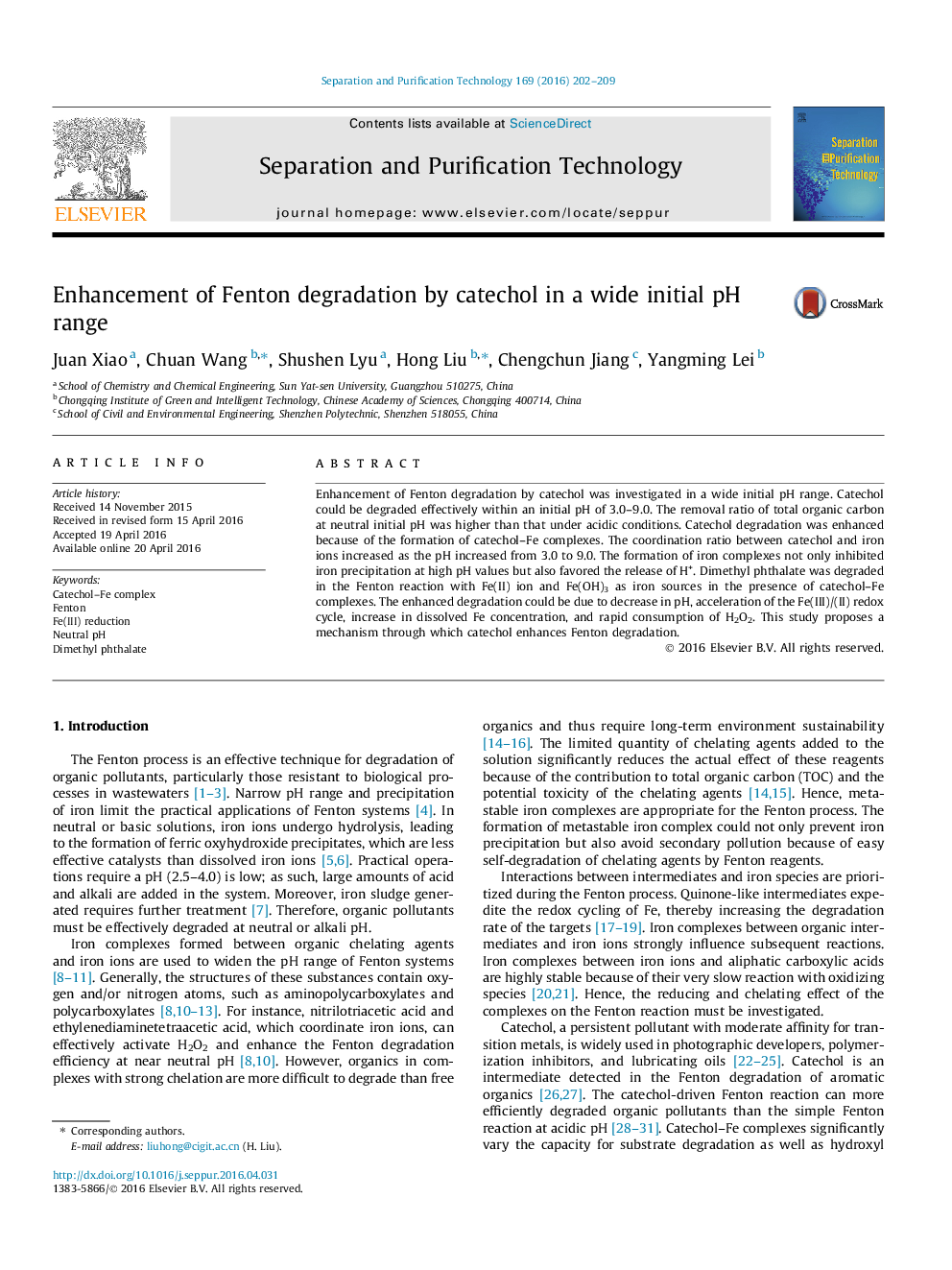| کد مقاله | کد نشریه | سال انتشار | مقاله انگلیسی | نسخه تمام متن |
|---|---|---|---|---|
| 639893 | 1456951 | 2016 | 8 صفحه PDF | دانلود رایگان |

• Formation of catechol–Fe complexes increased dissolved iron ions and reduced pH.
• Catechol could be effectively degraded in a wide initial pH range of 3.0–9.0.
• Catechol facilitated Fenton degradation of DMP.
Enhancement of Fenton degradation by catechol was investigated in a wide initial pH range. Catechol could be degraded effectively within an initial pH of 3.0–9.0. The removal ratio of total organic carbon at neutral initial pH was higher than that under acidic conditions. Catechol degradation was enhanced because of the formation of catechol–Fe complexes. The coordination ratio between catechol and iron ions increased as the pH increased from 3.0 to 9.0. The formation of iron complexes not only inhibited iron precipitation at high pH values but also favored the release of H+. Dimethyl phthalate was degraded in the Fenton reaction with Fe(II) ion and Fe(OH)3 as iron sources in the presence of catechol–Fe complexes. The enhanced degradation could be due to decrease in pH, acceleration of the Fe(III)/(II) redox cycle, increase in dissolved Fe concentration, and rapid consumption of H2O2. This study proposes a mechanism through which catechol enhances Fenton degradation.
Figure optionsDownload as PowerPoint slide
Journal: Separation and Purification Technology - Volume 169, 1 September 2016, Pages 202–209